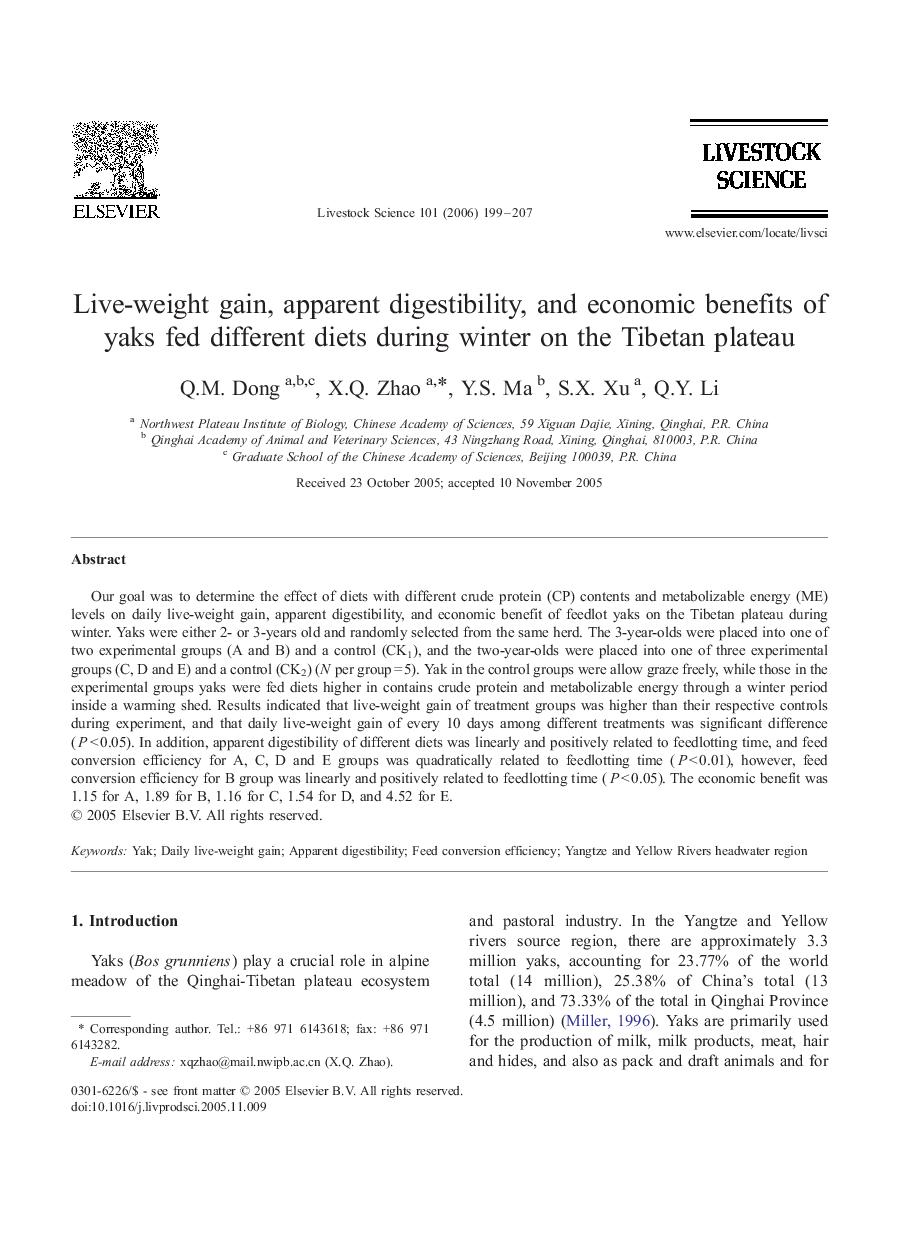| Article ID | Journal | Published Year | Pages | File Type |
|---|---|---|---|---|
| 2449028 | Livestock Science | 2006 | 9 Pages |
Our goal was to determine the effect of diets with different crude protein (CP) contents and metabolizable energy (ME) levels on daily live-weight gain, apparent digestibility, and economic benefit of feedlot yaks on the Tibetan plateau during winter. Yaks were either 2- or 3-years old and randomly selected from the same herd. The 3-year-olds were placed into one of two experimental groups (A and B) and a control (CK1), and the two-year-olds were placed into one of three experimental groups (C, D and E) and a control (CK2) (N per group = 5). Yak in the control groups were allow graze freely, while those in the experimental groups yaks were fed diets higher in contains crude protein and metabolizable energy through a winter period inside a warming shed. Results indicated that live-weight gain of treatment groups was higher than their respective controls during experiment, and that daily live-weight gain of every 10 days among different treatments was significant difference (P < 0.05). In addition, apparent digestibility of different diets was linearly and positively related to feedlotting time, and feed conversion efficiency for A, C, D and E groups was quadratically related to feedlotting time (P < 0.01), however, feed conversion efficiency for B group was linearly and positively related to feedlotting time (P < 0.05). The economic benefit was 1.15 for A, 1.89 for B, 1.16 for C, 1.54 for D, and 4.52 for E.
